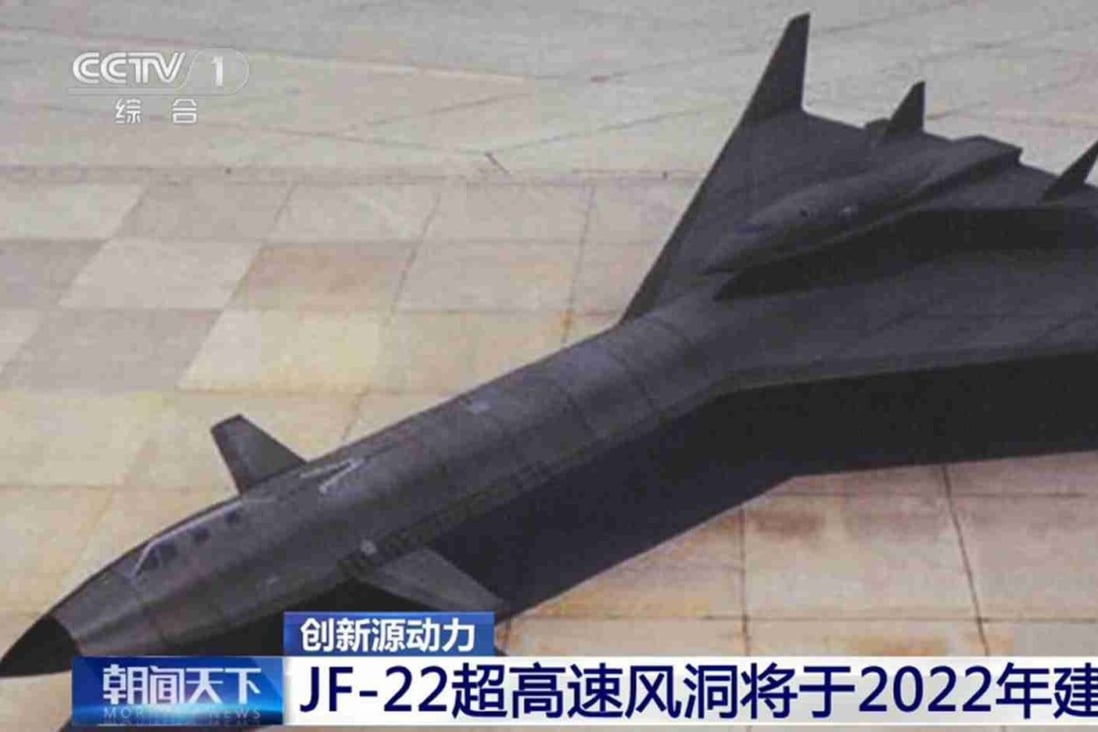Chinese air force may have cracked how to land a hypersonic drone
- Flight control computers’ inability to calculate a descent quickly enough at Mach 5 has been an obstacle to using hypersonic aircraft
- But Chinese military researchers say they have rethought the software to work around the problem
Published: 5:00am, 7 Sep, 2021

China is developing its hypersonic flight capabilities. Photo: CCTV
Landing an unmanned aircraft flying at above five times the speed of sound on a standard air strip is not easy, but Chinese military researchers say they have found a way to make it safer, potentially bringing applications for hypersonic flight a step closer.
The technology has progressed considerably, with China and Russia deploying various types of hypersonic missiles in recent years, and growing interest in applying the advances to drones. But bringing such aircraft back to ground safely has proved problematic – even more so with the added urgency and complexity of a military setting.
A modern plane relies on software to find an optimal path of descent, and humans can intervene if anything goes wrong. At hypervelocity, however, even the fastest flight control computer struggles to calculate it in time.
In a paper published in peer-reviewed domestic journal Tactical Missile Technology last Wednesday, Dai Fei and colleagues from the People’s Liberation Army (PLA) Air Force said they had made improvements based on a classified model of hypersonic drone.
Their work appeared to confirm the existence of a Chinese hypersonic drone programme – suggested previously by satellite images – but the PLA has yet to reveal details of it. It is unclear whether the drone Dai’s team used was under development or in service.
The rocket-propelled surveillance drone Wuzhen 8 appeared during a military parade in Beijing two years ago. It is believed to fly faster than sound, but whether it is hypersonic remains unknown.
Hypersonic drones could potentially be used against stealth aircraft such as the American F-22s and F-35s, Air Force Engineering University professor Wang Xing last year told an academic conference in Xian.
In a close-range battle, stealth technology is redundant, and no stealth aircraft could conceal itself after launching a missile or dropping a bomb, Wang said. A hypersonic drone deployed by China’s ground-based air defence system could catch up with an F-22 – which could be heading home at more than twice the speed of sound after launching an attack – in seconds, he said.
Such a drone would be designed to return to the nearest airbase, but the potential difficulty in doing so was shown in July during the first space tourism flight. Virgin Galactic was required to apply for air space for its rocket plane and to operate only within that zone, but the plane veered off course during landing, posing a risk to other aircraft.
The incident occurred while flying at Mach 3, or three times the speed of sound, but hypersonic flight involves speeds of Mach 5 or faster. A passenger jet is slower than sound.
Chinese air force may have cracked how to land a hypersonic drone
Flight control computers cannot calculate a descent quickly enough at Mach 5, but Chinese researchers say they have rethought the software to work around it.

